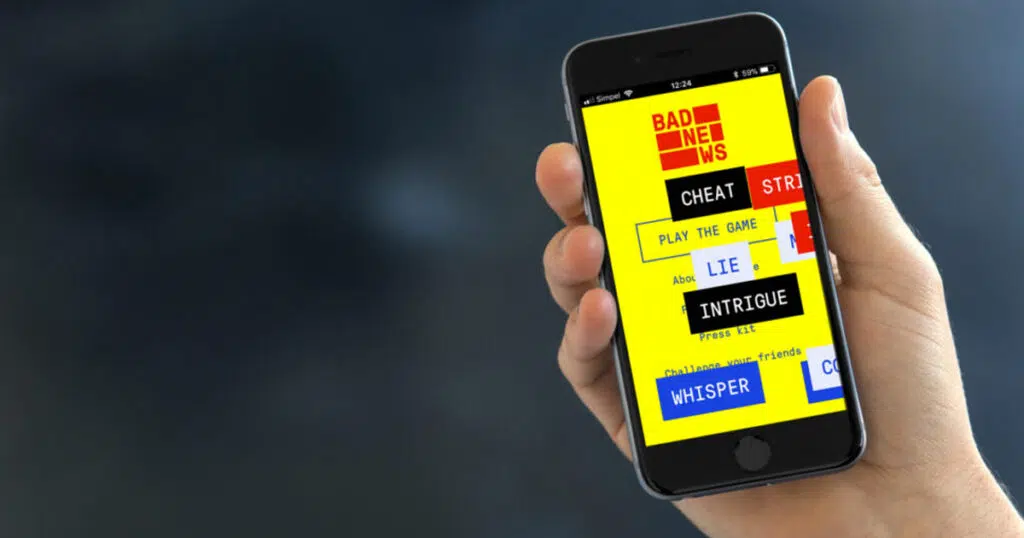
Who’s Going To Pre-Bunk The Pre-Bunkers?
The idea that viewers can be taught to be more aware of and better able to defend themselves against manipulative online content simply by watching 90-second video clips no matter the subject matter was the subject of a study conducted by researchers from Cambridge and Bristol universities and published in the journal Science Advances.
Researchers behind the so-called Inoculation Science project compare the approach to a vaccine: by giving people a small dose of misinformation in advance, it helps prevent them from falling for that type of messaging in future, an idea based on what social psychologists refer to as inoculation theory.
The investigation studied about 30,000 participants and found that, in spite of the high level of distractions on the Internet, the ability of participants to recognize manipulation techniques employed by misinformation tactics — and then dismiss those techniques before they managed to have an effect, or pre-bunk them — increased an average of 5 percent. The videos even made an apparent impact on those who only viewed them once.
“Our research provides the necessary proof of concept that the principle of psychological inoculation can readily be scaled across hundreds of millions of users worldwide, said study co-author Prof Sander van der Linden, head of the Social Decision-Making Lab (SDML) at Cambridge, which led the work.
“Our interventions make no claims about what is true or a fact, which is often disputed. They are effective for anyone who does not appreciate being manipulated,” said lead author Dr. Jon Roozenbeek, also from Cambridge’s SDML. He described the team’s videos as “source agnostic,” avoiding biases people have about where information is from — which seems too good to be true, considering the research videos were posted on YouTube, which has been roundly criticized for the ways it banned former President Donald Trump, high-profile conservatives including Fox News host Dan Bongino and an array of other content contributors critical of, among other issues deemed protected and untouchable by members of the liberal mainstream media, the federal government’s Covid-19 vaccination policies and the way the disputed 2020 general election was run.
Van der Linden explained his team’s decision to work with the social media giant was rooted in the fact “YouTube has well over 2 billion active users worldwide. Our videos could easily be embedded within the ad space on YouTube to pre-bunk misinformation,” he said.
Of course, the biggest questions at this point, then, are exactly what kind of messaging is considered misinformation and what material is considered positive and acceptable? A 7-minute video posted at the science news aggregator website ScienceDaily.com in connection to the site’s write-up on the study findings, manages to counter any of the claims the pre-bunking education effort campaign is a truly fair and impartial campaign.
Mostly featuring van der Linden speaking towards a camera and explaining the pre-bunking approach, the video opens with van der Linden providing the voice-over narrative to a series of striking images including those of natural disasters, war and violent protests, Sandwiched between images of Covid-19 virus cells and the statue of a leader, presumably in some totalitarian nation, is a clip of President Trump at the lectern pointing to someone in the audience and mouthing the words, “Fake News,” followed by still shots of the riot at the Capitol on January 6, 2021. That positioning of the former president within the truly irredeemable forces in our world is further underscored a few seconds later with a short clip of former President John Kennedy and First Lady Jacqueline Kennedy during one of their “Camelot” family moments. The video producers failed to use clips of any of the violence and mayhem caused by the Black Lives matter Summer of Protests.
Several minutes later into the video, as van der Linden explains how people tend to begin believing a false message if they hear it repeated enough, an image of President Trump wearing one of his iconic red Make America Great Again hats flashes on the screen, followed by an image of what looks to be a MAGA yard sign.
Assuming the images in the 90-second training videos are similar to if not exactly the same as those in the explanatory video, it’s evident the developers at YouTube and parent company Google haven’t at all suspended their biases against President Trump or things conservative.
It’s time to find a way to debunk the pre-bunking machine.



